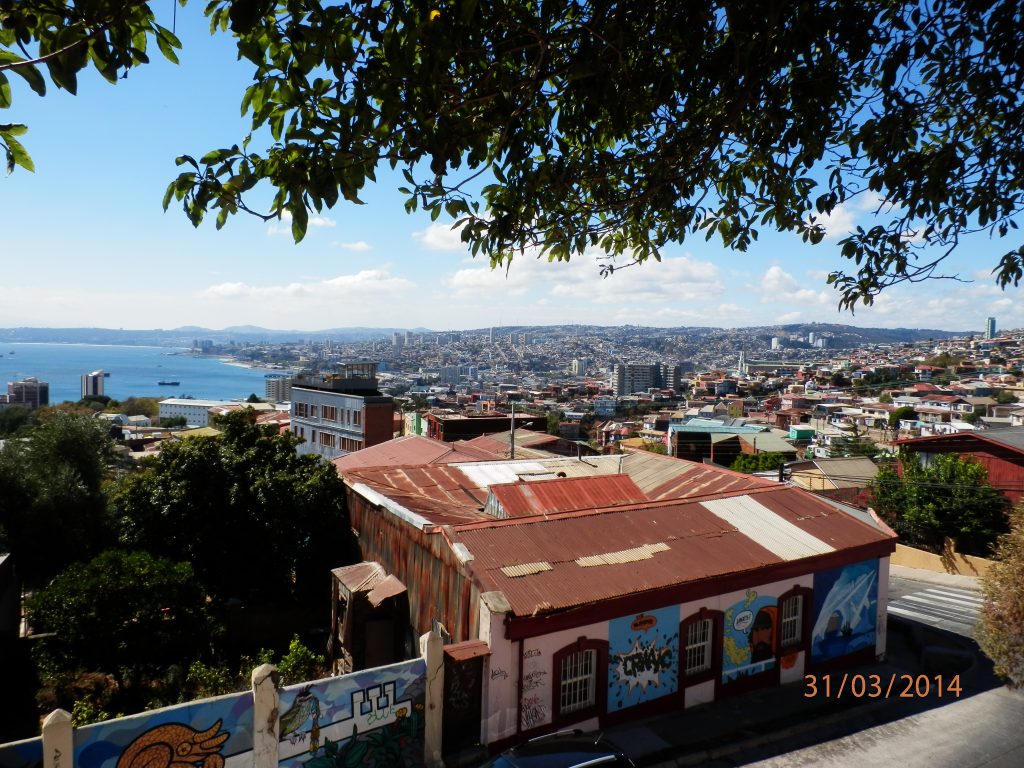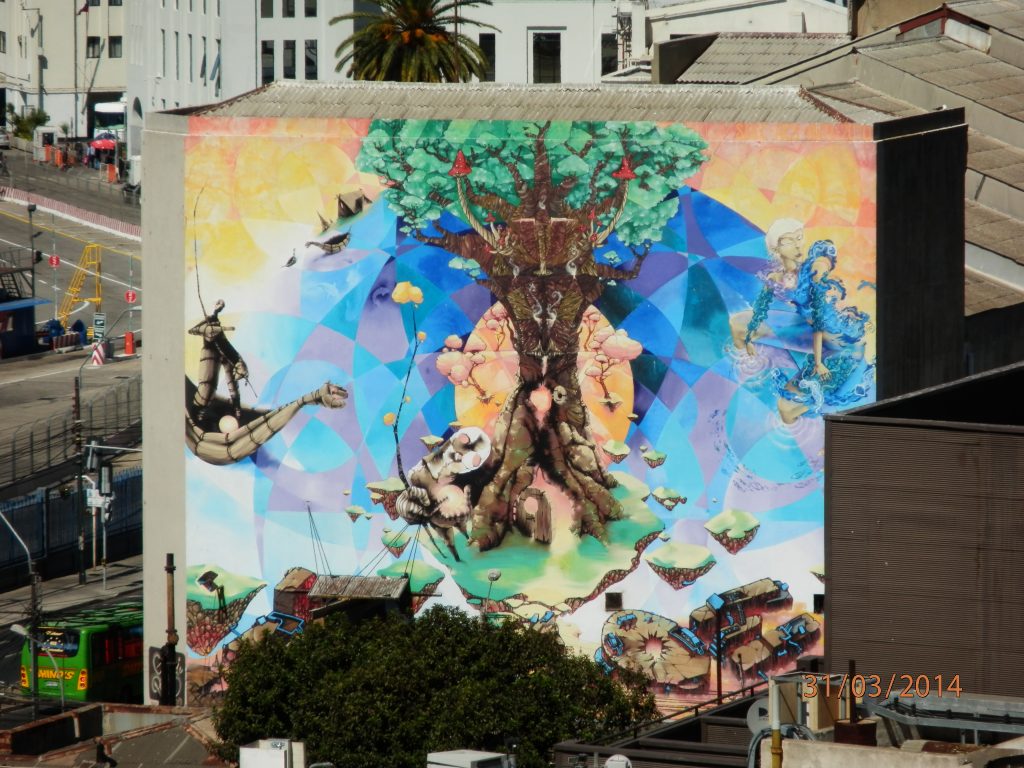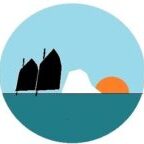TO VAL-A-PARAISA ROUND THE HORN (31 MARCH 2014)
After a very comfortable night in our home-from-home in Punta Arenas, Hospedaje Magellanes, we got a taxi to the airport in good time, and checked in for our flight to Puerto Montt (apparently, “Muerto Montt” to the locals, reflecting the exciting nature of the town, which is effectively a transport hub for those travelling to and from Patagonia); at this point we were informed that the flight was running 2 hours late due to fog at Puerto Montt (PM) airport. Now, I had booked our bus to Santiago from PM about 4 hours after the flight was due to arrive, which I thought would be plenty, albeit a bit tight with the promised delay. We finally boarded and took off 3 1/2 hours late. On arrival at PM, I dashed through the arrival hall to the information desk while Stu waited for our baggage to come through. I had the information operative call through to the bus company to find out what the score was if we didn’t make the departure time. Basically the answer was that they wouldn’t wait, they didn’t pass by the airport and we had very little chance of making the bus station in time, but may be lucky if we took a taxi. We ran outside and flagged down the nearest car, saying that we needed to be at the bus terminal “muy rapido”. To the driver’s credit, he made his best effort to get us to the bus on time, spending more time in the left-hand lane that the right, but unfortunately an accident (involving another vehicle, not ours) put a stop to his valiant efforts, and we crawled our way into town. Our departure time came and went, so when he dropped us at the main bus terminal, we first had to find another bus that would take us to Santiago or, at a stretch, to Valparaiso, that night so we would not have to find accommodation so late in the day. Fortunately we managed to secure the last two “semicama” (reclining sleeper) seats on a direct bus to Valparaiso that night, so breathed a sigh of relief before stuffing a burger down our necks, having not eaten much since Marisol’s breakfast in Punta Arenas, and boarded the bus only one ticket the poorer. The buses in Chile are generally very good, and the semicama seats comfortable with plenty of legroom and reclining to a decent angle. Once installed, we both reclined and surprisingly quickly succumbed to the fatigue of our day’s travel, the bus’ sound system not being quite up to giving us the soundtrack to the movie they were playing. At around 8 in the morning we were awoken with “breakfast” – a carton of juice and a squashed bit of cake. Thankfully I could supplement this with a couple of Snickers bars left over from our trekking.
We passed through the capital, Santiago, briefly, and then headed onward to the coast and our destination, Valparaiso. Many would think it strange that we had eschewed the capital for a smaller city, especially when getting to the one involved passing through the other. However, Valpo held a special fascination for me as the destination of so many latter-day square-rigged cargo ships, to load a valuable cargo of nitrates for use as fertilisers in Europe. It is still Chile’s principal port and naval headquarters, so attracted the maritime historian in me. I had also heard that it is a beautiful and interesting city with a very artistic bent.
We rolled into the bus terminal at around 1100, and caught a taxi straight to our hostel, where we were able to drop our bags and head out to find sustenance and start exploring.
At this point I should explain the geography of the city: it has a strip of flat land along the shore (El Puerto and El Plan), containing the port and the financial and central business districts, and mainly large palacios and modern blocks; behind this strip are a number of steep hills (Cerros), separated fairly naturally by valleys, and these are covered by a higgledy-piggledy collection of smaller buildings, ranging from palacios to shanties with everything in between, perched precariously on the slopes, brightly coloured and constructed in every imaginable material. The roads are ridiculously steep, with alleys of stairs cutting through between them, and occasional Ascensores (funicular lifts) easing pedestrian access from sea level to the various Cerros.

Photo – Stu Sheldon
These date mainly from the early years of the 20th century, and are in varying states of repair, from derelict to smart and newly-renovated, but are all a marvellously Heath Robinson, fun and cheap (mostly 100 pesos – about 10p) way of saving one’s breath. One rattles up the hill in a garden shed on wheels, whilst the city and bay spread out below you, before all too soon you reach the top and the attendant opens the sliding door to let you out.
Over the past 3 days we have explored several of the Cerros, visiting the naval museum and former prison (both seem to have been a theme during our Southern Hemisphere travels), the cemeteries (ditto, closed), the Valparaiso home of famous Nobel prize-winning poet and communist patriot, Pablo Neruda (layered like a wedding cake, eccentrically decorated and utterly delightful – shame about the abysmal poetry), and of course many establishments offering coffee and cake. The port is a shadow of its former self, but the city has taken on a new vibrancy, its slightly shabby but colourful sides having become a nest for artists. These are both the conventional sort, using oils, watercolours and pastels on canvas, paper and hardboard to depict the ramshackle beauty of the city, as well as the innumerable mural and graffiti artists who are doing their best to decorate every vertical surface on the Cerros, some legally, some not so, with an amazing variety of colourful and more or less artistic offerings. Less attractive are the “tags” left by the more vandalistic (is that a word?) element, who consider their work to be as artistic as the muralists, but unfortunately make an eyesore of many walls.

Photo – Stu Sheldon
It has been an enjoyable few days exploring the big city, but tomorrow we move on and hit the bus station again for the long stretch north through the Atacama desert to Arica, the port town and surf mecca just south of the Peruvian border.
